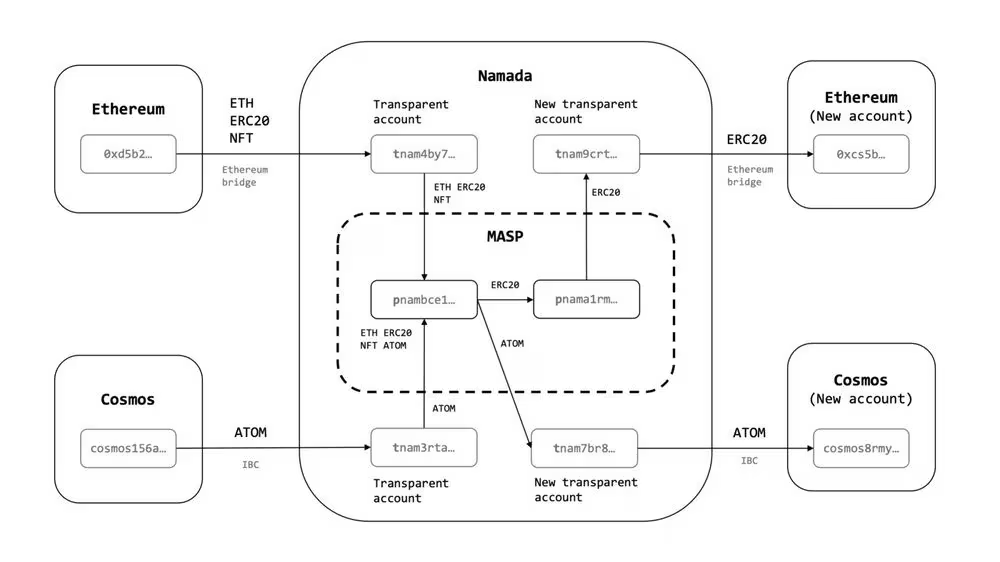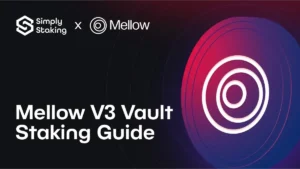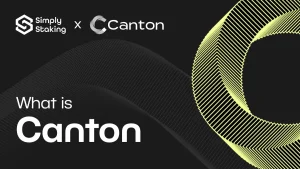Why Privacy is Important in Blockchain
The emergence of blockchain and the notion of it being an open ledger has led many to question the current architecture regarding privacy. Transparency in blockchain, while beneficial for the overall security and trust of the network, lacks adequate privacy protection making the end-users data and personal privacy vulnerable to exploits. Current systems (for the most part), enable anyone to view all of the transactions on the blockchain and follow the full flow of transactions from one user to another through the use of an explorer which is a publicly available good provided by every blockchain.
Having your data publicly exposed is a massive threat to the user who could be at risk of exploitation including financial scams, malicious actors obtaining information about the user and so much more. This is why we have seen an emergence of efforts to protect users’ privacy with many networks promoting a privacy-first approach such as Monera, ZCash, BEAM, and many more.
What is Namada?
Namada, branded as the “Shielded Asset Hub”, is a privacy-focused blockchain protocol designed to enhance user privacy and interoperability of privacy transactions. Developed by the Anoma Foundation (and serving as the first instance of the Anoma Protocol), the Namada Protocol is a privacy-centric layer that facilitates the transfer of assets (both fungible and non-fungible) across ecosystems to ensure that privacy is maintained across the different ecosystems. Key among these features is the implementation of zero-knowledge proofs which enable transactions to occur without revealing any underlying data about the transaction contents or the parties involved.

Namada is committed to ensuring privacy without sacrificing transaction speed or having high network fees. The architecture behind Namada has been designed to ensure transactions remain shielded thus preserving the confidentiality and most importantly the anonymity of the user’s activities.
What Problem Does Namada Solve?
Traditional blockchain transactions offer little privacy and expose users to potential data exploitation. Namada’s shielded transfers ensure that users, through Namada, can transact across multiple chains without sacrificing their privacy, financial data, and transactions from prying eyes.
While blockchain inherently offers some level of security due to its decentralised nature, traditional blockchain technologies often leave gaps in privacy, making transactions traceable and public. Namada addresses these privacy concerns through several innovative approaches.
Making Privacy Accessible Across Different Blockchains — Multichain Privacy
“Multichain Privacy” relates to the ability to maintain privacy and security across multiple blockchain networks. This idea is increasingly vital as the blockchain ecosystem evolves into a more interconnected landscape, where assets and data frequently move across different blockchain platforms.
Namada’s design includes interoperability features that allow it to work across various blockchain systems. Using Bridges and other communication protocols such as IBC (InterBlockchain Communication Protocol), privacy can be extended to Cosmos Chains and Ethereum with the same level of security.

Namada accomplishes multi-chain data protection through a combination of innovative features:
- Modular Shielding Layer: Namada’s architecture separates the shielding functionalities from the base blockchain, allowing for seamless integration with existing blockchains and DeFi applications.
- Zero-Knowledge Succinct Proofs: Namada leverages zero-knowledge succinct proofs to cryptographically verify transactions without divulging any underlying details.
- Shielded Pools: Namada introduces shielded pools, which combine multiple user transactions into a single, indistinguishable entity.
Shielded Asset Hub
Multi-Asset Shielded Pool
The Multi-Asset Shielded Pool (MASP) is a core feature of Namada. The MASP is a protective layer that allows all types of assets to interact with it (meaning fungible and non-fungible tokens). The MASP is designed to hide the specifics of these assets when a transaction occurs which means that details such as the amount, your identity and other sensitive information are not exposed to the public blockchain, therefore, shielding your privacy.
Unified Shielded Set

Zero-knowledge proofs (ZKPs) are designed to support shielded transactions for one asset at a time. ZCash (ZEC) is a prime example of this. The Unified Shielded Set utilises the Multi-Asset Shielded Pool (MASP) inspired by the Sapling circuit from ZCash to allow multiple assets to be part of the same set.
The single-asset approach worked in the past since most users used to hold a single token that usually had no way to interact with other chains and ecosystems. Today’s environment has changed drastically and, as we move to a more interconnected landscape, more and more users are now holding a plethora of different tokens and interacting with multiple apps in the DeFi space. The majority of these dApps and even chains do not have any privacy-preserving features so all interactions are recorded and publicly available for chain analysts to monitor.
Benefits of using the Unified Shielded Set:
- Make Shielded to Shielded transactions
- Protect your on-chain data from being exposed.
- The more assets inside the Shielded Set, the stronger the privacy guarantees
- Shielded Set Rewards reward users for protecting their data and helping others protect theirs.
Shielded Swaps
Back in 2023, at OsmoCon in Paris, it was unveiled by Adrian Brink that when Namada launches, it will allow Osmosis users the ability to “privately swap tokens on a chain that doesn’t inherently support data protection”

Although the diagram above showcases several steps, in reality from the user’s perspective all of this happens in a single click of a button allowing for one of the best privacy UXs currently on offer.
How does Shielded Swap Work?
- Swapping ATOM to OSMO. ATOM from Namada’s shielded account is transferred over IBC to a transparent account on Osmosis (not an account specific to a single user).
- The ATOM is then openly traded on the Osmosis platform to OSMO. This transaction can be monitored since it is an open address.
- The newly acquired OSMO is then sent back over IBC to Namada where it is then sent to the end user’s shielded account (this is untraceable once it is in Namada).
Throughout this entire process, the user’s identity remains anonymous and therefore full privacy is achieved. All transactions would somewhat seem uncorrelated therefore we can see the power of how Namada’s privacy layer (shielded set) allows for traditional blockchain transactions to be turned private.
Shielded Swaps are not something specific to Namada <> Osmosis however is just the beginning of the interactions as any chain that is connected to Namada can benefit from this and not just IBC-compatible chains.

Namada’s Significance in Blockchain Privacy
Research and Development
Namada’s development has been supported by extensive research into cryptographic primitives, including zero-knowledge proofs and other privacy-enhancing technologies. The platform has been involved in various tests and community feedback initiatives to refine its features and ensure robustness against potential security threats.
Users can pair on-chain privacy solutions with off-chain hardware products like the Ledger wallet for complete security.
Community and Ecosystem Growth
As a hub for shielded assets, Namada also plays a vital role in fostering a community and ecosystem where privacy is valued and upheld. Through partnerships, collaborations, and community-led initiatives, Namada not only advances its technology but also contributes to the broader discussion and implementation of privacy standards in the blockchain space.
Namada Shielded Expedition
Namada’s testnet, referred to as the “Namada Shielded Expedition,” is an incentivized environment where participants can engage in complex simulations designed to test the network’s capabilities. This testnet phase involves tasks like “asteroid mining,” where participants earn rewards based on their contributions and performance, thereby helping to fine-tune the network before the mainnet launch.
NAM Airdrop
Namada has implemented several strategic airdrops aimed at increasing community engagement and testing the robustness of its privacy features. While the claim has now been closed, we just wanted to remind people of the airdrop since it went live in Q4 2023.
Full list of eligible participants:
- Zcash R&D & Rust Developer Ecosystem
- ZKPs, Cryptography PGs, Privacy Research, & Learning Resources
- Interchain PGs, Shielded Ecosystem, PGF Mechanism R&D
- Cosmos and Osmosis stakers
- BadKids NFT holders
- Gitcoin Donors of ZK Tech and Crypto Advocacy
- Namada Trusted Setup Participants
The Road to Mainnet for Namada
Namada is launching a 5-phase process to ensure all systems launch smoothly.

The Shielded Expedition Testnet is undergoing final stress tests before commencing the decentralised launches. All launch phases will be determined by the Namada stakers (community) through on-chain governance.
- Phase 1, is when you’ll be able to access your genesis NAM balance, start staking by delegating NAM to your selection of validators, and start participating in Namada governance.
- Phase 2 turns on staking rewards. Here you can start claiming your NAM rewards for helping secure the network.
- Phase 3 is when Namada’s core functionality starts to come to life, as governance begins rolling out support for IBC asset transfers. Here you can start shielding governance-enabled IBC assets for state-of-the-art data protection.
- In phase 4, Namada’s first-of-its-kind shielding rewards system goes live. Here you start collecting rewards for shielding governance-enabled assets, which protects your data and helps strengthen Namada’s data protection guarantees.
- Phase 5 is when NAM transfers are turned on in phase 5, marking the completion of Namada’s launch process. From here, the shielded multichain era has officially begun.
Concluding Remarks
The evolution of blockchain technology with privacy at its core, as exemplified by Namada, marks a significant shift in the digital landscape. The Shielded Asset Hub enables privacy across blockchain transactions and chains connected to Namada by leveraging advanced cryptographic techniques such as Zero-Knowledge Proofs. By enabling multichain privacy which ensures the private transfer of both fungible and non-fungible assets across multiple blockchains, Namada addresses the critical vulnerabilities of traditional blockchain architectures — where transaction details and user identities are exposed.
The innovative use of Shielded Pools and the Multi-Asset Shielded Pool (MASP) within Namada’s protocol enhances transaction privacy and integrates seamlessly with existing and emerging blockchain ecosystems.
As blockchain technology continues to evolve and get more complex, the importance of privacy from a user’s standpoint is becoming extremely important. Namada’s development highlights the growing recognition within the blockchain community of the need to safeguard user data against exploits and surveillance.
Disclaimer: This article contains affiliate links. If you click on these links and make a purchase, we may receive a small commission at no additional cost to you. These commissions help support our work and allow us to continue providing valuable content. Thank you for your support!
This article is provided for informational purposes only and is not intended as investment advice. Investing in cryptocurrencies carries significant risks and is highly speculative. The opinions and analyses presented do not reflect the official stance of any company or entity. We strongly advise consulting with a qualified financial professional before making any investment decisions. The author and publisher assume no liability for any actions taken based on the content of this article. Always conduct your own due diligence before investing.























































